Camper conversion & vanlife
Advice for newbies
Does vanlife appeal to you and you're toying with the idea of converting a camper yourself? To convert a van into a camper van, there are certain requirements you need to meet.
In addition to the craftsmanship skills, you also need a suitable place to carry out the work and, of course, the necessary tools. You should also think about the base vehicle and issues such as water, electricity, gas, shower, TÜV vehicle approval checks and much more before you start the work.
In this guide, we help you with basic decisions so that you can make your dream of owning a camper come true.
Guide content
The ultimate guide for vanlife newbies
Everything you need to know about camper conversion & vanlife
Your skills
From Zero to Hero

As this kind of conversion is almost always made with wood, some experience of working with wood is advantageous. Ideally, you will have already built something out of wood and know how to produce sturdy wooden constructions with the appropriate equipment. You should also be able to handle other tasks, such as electricity or gas installation, or get a professional to help you with them. Then, nothing should stand in your way of turning a van into a camper.
If you have never made anything out of wood, it's best to first start out with a smaller project, such as a micro-camper extension. A small extension like this is not quite so expensive and actually manageable in terms of effort. This will give you an initial insight into the world of camper conversion. Any estate car or high-roof estate car that has a flat bed that is long enough for you to sleep in is actually suitable for this purpose. Even smaller cars can be transformed into micro-campers with for example a roof tent.
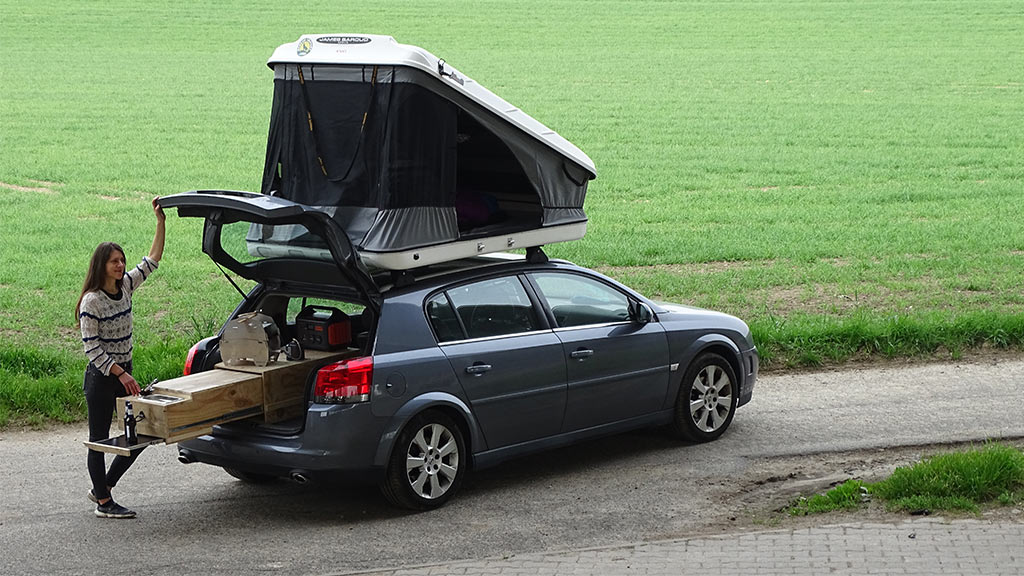
Where to convert your camper
More than just a roof over your head

Ideally, you should choose a roofed location to convert your camper, where both the camper and material and tools can be stored. When sawing, it is also helpful to have a roof over your head so that you can continue to work on your camper even in bad weather. If you had some additional space around the camper, that would be ideal. However, you don't have to rent a workshop right away – a large garage or a barn, for example, are perfect. However, if you are considering working out on the road, please bear in mind that you will be sawing some holes for windows and roof covers into the body. This can very quickly result in water damage should it rain.
In the summer you should always be able to find a place in a nearby farmer's barn. And in winter, spaces are often rented to campers for overwintering. You'll be quite lucky to get hold of a place.
The tools
Nothing beats good tools
Priority 1: The must-haves
Without these devices, conversion work wouldn't be possible
- » Drill
- » Cordless Srewdriver
- » Jigsaw
- » Circular hand saw or Table saw
- » Grinder
Hand on heart: With poor or too few tools, it is simply not possible to achieve good results.
Thanks to our passion for doing things ourselves, we have fortunately always been well equipped with working equipment. This helped us with our first camper conversion. In the meantime, of course, a lot more was added and we know which tools are absolutely necessary.
In the case of a camper extension, wood must be connected for the construction of furniture. The simplest of connections are screw connections. That's why a cordless screwdriver is simply a must!

The belt sander has become a very important tool for us. With the belt sander, workpieces can be machined very quickly. Sanding by hand often takes far too long. We use the belt sander to sand curves into workpieces or to remove material quickly. We now have a table belt and a disc sander, which of course simplifies the handling and the process of machining.
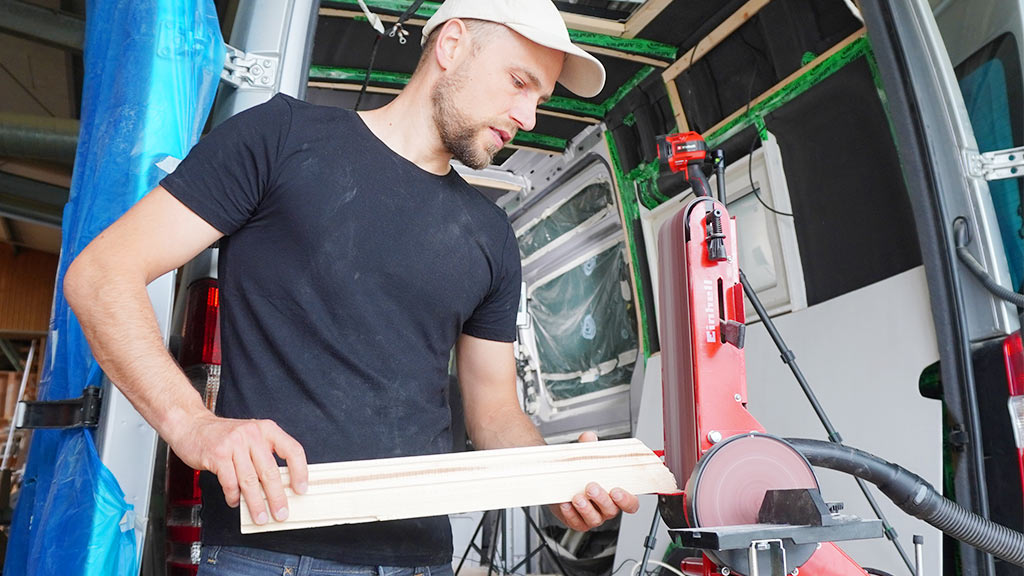
You can do a lot with a jigsaw. It is particularly suitable for sawing out round shapes, which is why we use it so often.
In a camper conversion, however, you will also have to saw a lot of straight and long shapes, which is why at least a hand-held circular saw or a circular table saw is necessary. This is simply how you achieve much more attractive results.

More tools for your camper conversion
This makes removal quicker, easier and more convenient
Our first camper was remodelled using only these Priority 1 tools. This is possible and in many cases should be sufficient. However, we have also stocked up our toolbox in the meantime and we definitely don't want to miss out on some of the tools. These tools take your camper conversion to the next level:
Rotating Sander
If you need many of straight surfaces to be smooth, then you'll save yourself a lot of work with an eccentric sander. It ensures that your work surfaces are beautifully smooth – and in a very short time with little effort. Depending on how smooth the surface is to be, there are different sanding wheels available for the eccentric sander.
Mitre Saw
A cross-cut saw is super easy to use and, with a beam construction for furniture construction, a tool that will save you a lot of time and effort. You can saw the beams very quickly at different angles. So that the edges of the wood do not become too shredded, a finer saw blade can be used. In the case of a camper conversion, this is a very common task.
Router
You can refine the edges of your workpieces with a router. They simply have a better-looking finish when they are rounded at the edge. With a router or biscuit jointer, you can also mill grooves and manufacture furniture in a completely different way than with screw connections. These tools can take your conversion to the next level!
Multitool
A multitool is simply very helpful for many smaller tasks. Thanks to the various attachments, you can use the multifunctional tool for sanding, scraping or sawing out smaller corners, depending on the application. Especially in confined spaces, this is super useful.
Good light
Especially in poorly lit or dark corners of the workshop, good light is a necessity. This means you will also be able to carry out screwing tasks and work on the camper without relying on natural light. In addition, LED lamps offer the advantage that they do not emit additional heat. Because even like this, you'll still work up a sweat while working on your van.

In addition to power tools, it is also advisable to have enough sandpaper in different grain sizes. In addition, clamping clamps, a cartridge press and tools such as screwdrivers and wrenches should be part of your basic toolkit.
If you have your tools together, let the conversion begin. Let's go!
The base vehicle
Beginning and starting situation of the camper remodelling
First, you need the right vehicle for your conversion. It all depends on the size of the van you can handle. A mini-camper may be sufficient for short holidays. For longer holidays, we recommend choosing a van that offers a little more space for all your things. We were on the road in Europe for a year with our 6-metre-long Sprinter and that was the perfect size for this kind of trip. For the base vehicle there are different models, such as a Fiat Ducato, Mercedes Sprinter, VW Crafter, Ford Transit, Opel Movano, VW Bus, etc. You really are spoilt for choice when it comes to finding a suitable vehicle in the right size and of course for your individual budget.
With regard to the size of the base vehicle, it is also essential to first clarify whether you need standing height and how long the vehicle should be. The right size for your conversion depends primarily on what you want to install. For example, do you need a fixed shower and fixed bed? If so, things can get quite tight in a 6-metre-long van. In longer vehicles you will certainly be able to fit in more. However, with larger vans, some "wild" parking spaces become a challenge, as do some tight curves, for example in southern Europe.

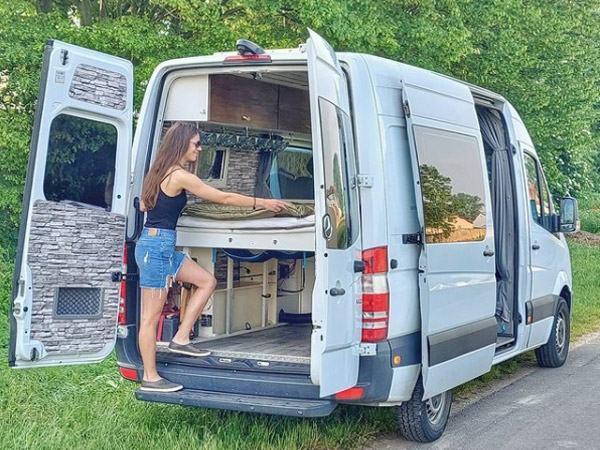
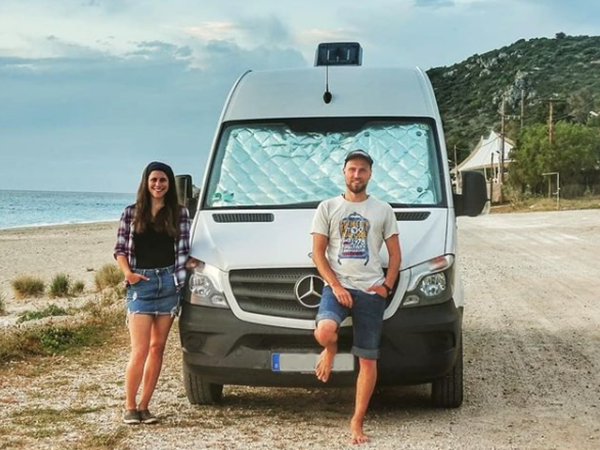
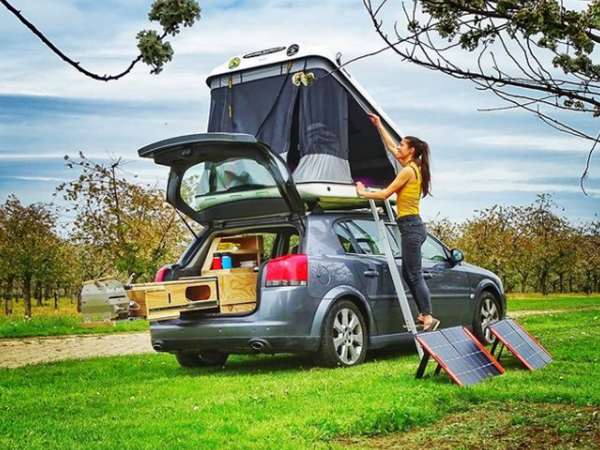
Camper conversion planning
Here are the questions you should ask yourself
Design
Where there is a plan, there is a way
Before you start the actual conversion, you absolutely need a design. It's best to grab a notebook and write down what you want to install in your camper. You should clarify the following questions:
- Would you like your camper to be a motorhome?
- Is there a heater? Should the vehicle be insulated?
- How many litres of water and wastewater do you need?
- What do you want to cook with? Gas, electricity, ethanol or petrol/diesel?
- Which surface-mounted battery will it be, and how will you charge it?
- Should a shower and a toilet be installed?
- Will the bed be sideways or lengthways, or even transformable?
- How much storage do you need?
TÜV
How to get permission for use as a motorhome
If you want to register your van as a motorhome in Germany once the conversion is done, then the vehicle must meet some requirements. Motorhomes are cheaper when it comes to tax and insurance, which is why it is definitely worth it.
However, some criteria have to be met. Otherwise, everyone would try to re-register their normal vehicle as a motorhome. Therefore we advise you to contact TÜV already during the conversion process. Every TÜV office has different ideas and requirements when it comes to granting approval for vans to be registered as motorhomes.
Heating and insulation
Cool in summer and warm in winter
The insulation
Should I insulate my camper? We say: Absolutely! Even in spring, it can be very cold, which is why insulation is always worthwhile. Even if you only want to be on the road in the summer, we advise that you insulate your van. A well-insulated van does not heat up as quickly and the insulation also helps with sound-proofing.
Another important reason is the issue of moisture: If you attach the insulation material cleanly (without air pockets) to the inner wall of the camper, you move the so-called dew point to the outside of the van. This hugely reduces the risk of rust and mould!
There are many ways to insulate your vehicle. However, most use closed-pore rubber mats. These are either self-adhesive or are glued to the inner walls with two-component adhesive. These mats have the advantage that they are flexible compared to Styrofoam or Styrodur and can therefore be better adapted to the often angled or curved surfaces of a van. This makes assembly much easier! In addition, they are more fire-resistant than polystyrene and have very low moisture absorption. We have had very good experiences with the rubber mats so far.
Heating
Before all essential woodwork, it is extremely important to plan certain conversion components first. These include a diesel heater, the gas tank and the water supply.
In a diesel heater, the installation location plays a very decisive role because you have to tap into the fuel tank and also attach many components under the vehicle. Holes must be made in the ground, which is why you cannot use just any position. In addition, your diesel or gas heater needs fresh air for suction and it should also be located in a position that the entire interior can be heated. So, you don't want there to suddenly be a cupboard in the way.
Water, gas and electricity in your DIY camper
Here's what to consider when planning
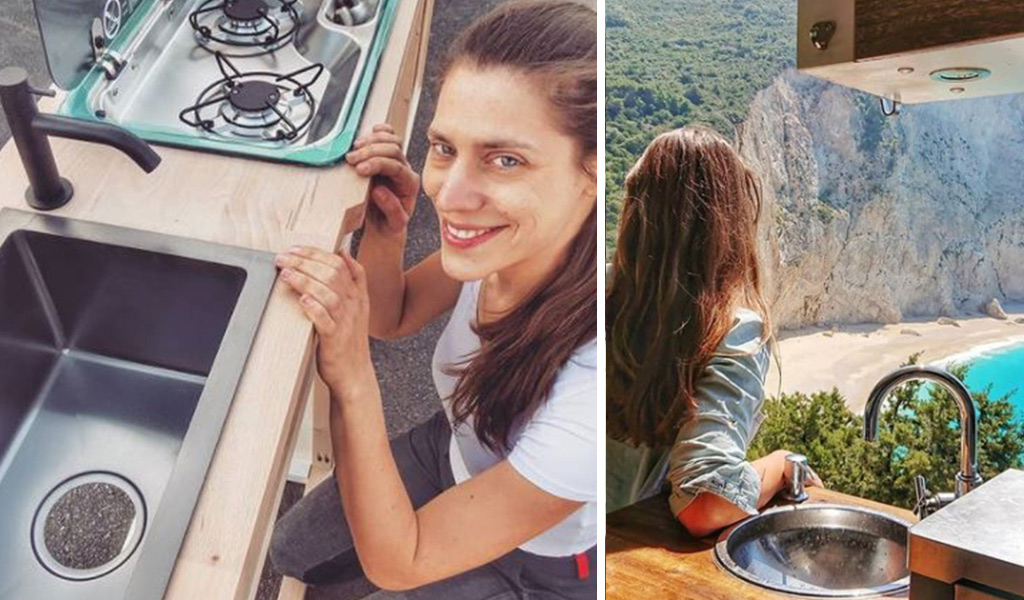
Water in the campervan
When it comes to water supply, it's not easy to find the right tank that fits perfectly with the design of your space. Here, it is advisable to choose a tank of a suitable size and to plan the furniture around it. You can save a lot of money here because every special form is extremely expensive.
Sometimes the issue of water is not easy to implement. Especially when a boiler comes into consideration. You can make things much easier and, more importantly, cheaper if you dispense with hot water and install just a cold water supply.
Cooking in the camper van
A kitchen belongs in every camper! Of course, in the camper we also want to cook. What is vanlife without cosy evenings with good company and good food? That's why a kitchen with a suitable cooker must be part of your van.
We love to cook on a gas flame. That's why our campers have a gas cooker. To cook with gas, you need a gas bottle that must be stowed away safely and in a compliant manner. Here are some rules that you should definitely know. You must have your gas system approved by the TÜV before the motorhome registration. It is therefore advisable to handle the matter thorougly or to ask an expert for advice. Be sure to consider the position of the gas tank before planning the interior. So that there won't be any struts blocking the place for the gas tank ventilation in the end.
If you don't want any gas in your motorhome, you can also use good alternatives, such as an ethanol, diesel or petrol cookers. You can also cook purely electrically. This is a great thing, but it requires a lot of power.
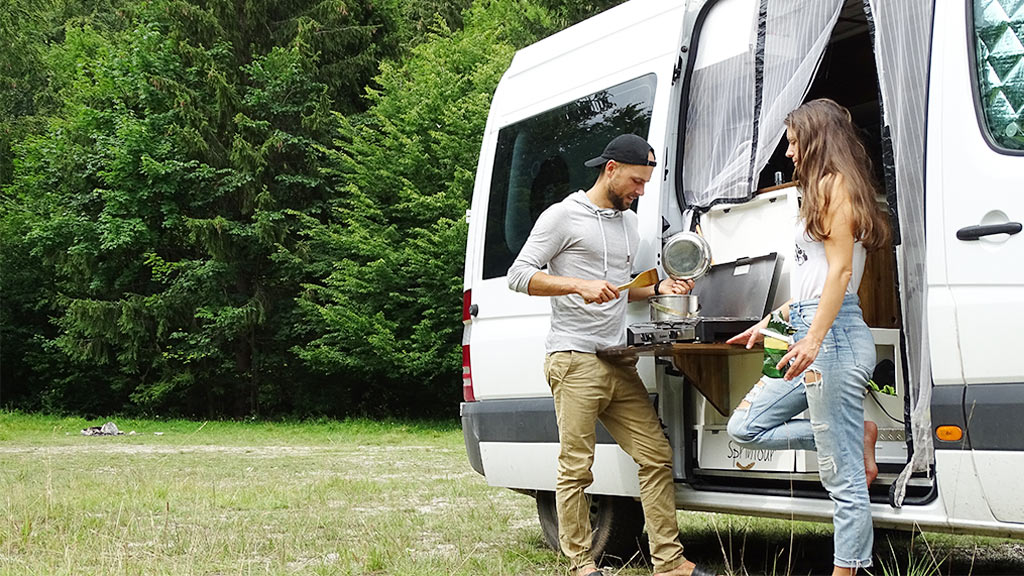
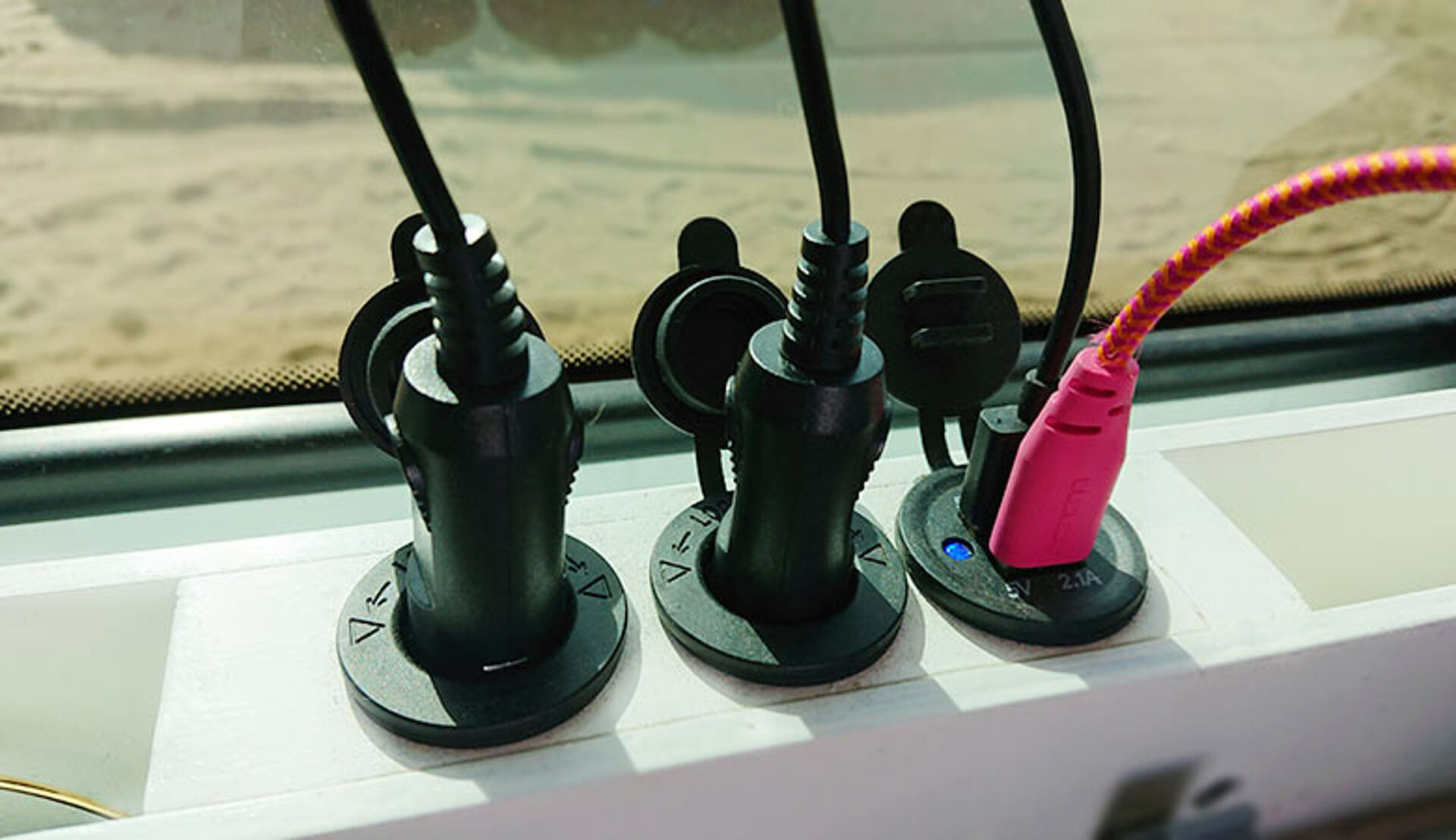
Power in the camper
Light, refrigerator, water pump, laptop, mobile phone… In order to be able to charge all your consumers on the go, a good power setup in the van is essential. A second battery, which is independent of the car battery and should have enough capacity to be able to charge your consumers should absolutely be part of your camper conversion. Therefore, it's best to calculate in advance how much power you use with the devices you want to operate or charge with the battery. Numerous sockets such as USB ports or cigarette lighters are also part of an ideal electrical setup for us. To charge the secondary battery, we recommend a charging booster and a solar system on the camper roof.
Here, too, it is preferable to have the electrical system checked again by a professional. This should be done from a safety point of view, and so that everything goes smoothly with the TÜV.
Personal hygiene on the road
Environmentally friendly and sustainable
Shower in camper bus
Nice and clean, even when camping
Want to install a shower in your camper? If so, then definitely plan more time for the conversion and the not inconsiderable space in the van. A shower/wet room in a vehicle requires a lot of effort (both in terms of time and money), both for the shower cabin itself and for the water supply. On the other hand, showering indoors is of course much warmer – especially in cold weather or in cooler areas. Plus, you'll enjoy total privacy in your own van. Weighing is the order of the day here. If you'd prefer to move your shower outside, you also have various options, for example: an outdoor shower connected to the water supply at the rear/boot space of the van, a simple shower bag, or the classic method of standing in a bucket and pouring water over yourself.
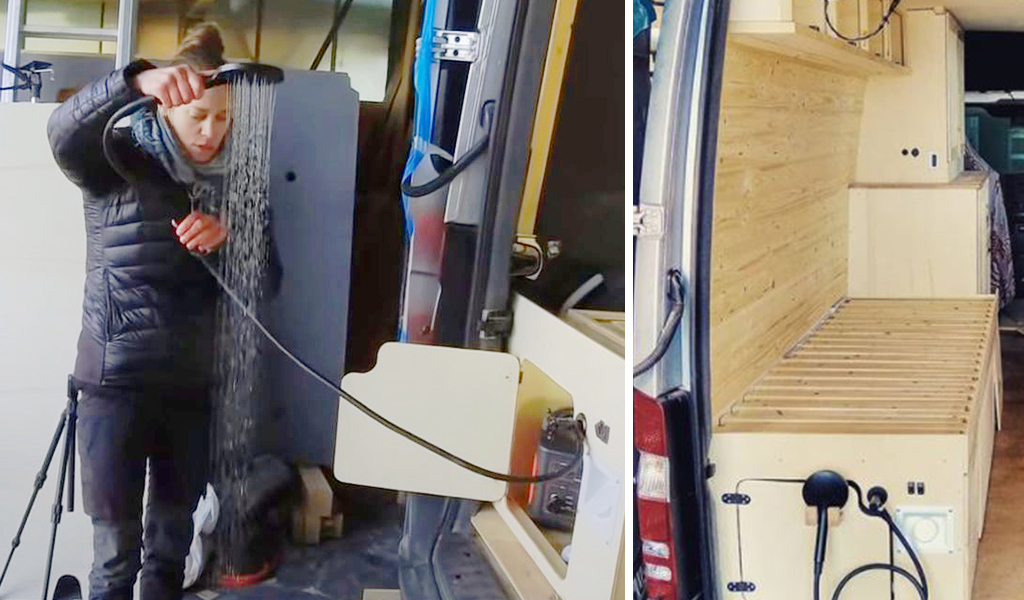
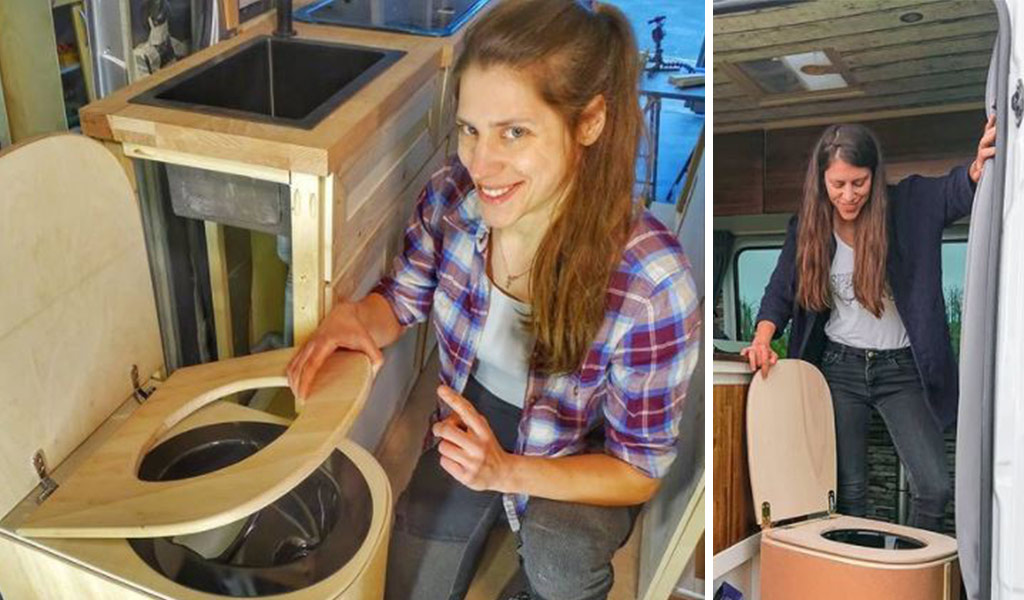
Motorhome toilets
When it comes down to business
A toilet should actually be part of every camper conversion. There are certain types of toilets that are suitable for different campers. Finished motorhomes usually use a chemical toilet. Chemical toilets are also available as mobile, mini versions. However, these mobile toilets must be emptied in special emptying stations, require special toilet paper and, as the name suggests, a lot of chemicals. However, if you have a self-sufficient lifestyle, we recommend that you install a more environmentally friendly separate toilet. There are now numerous models on the market. Or you could build one yourself without too much effort. With the right tools, this can be done relatively quickly.
Now you should be ready to tackle your camper conversion at full power and devote yourself to your project.
Taking everything into consideration, please bear in mind that it will most likely take you longer than planned to complete the work. But don't worry, that's perfectly normal! :-) We hope that we have been able to give you many useful tips along the way.
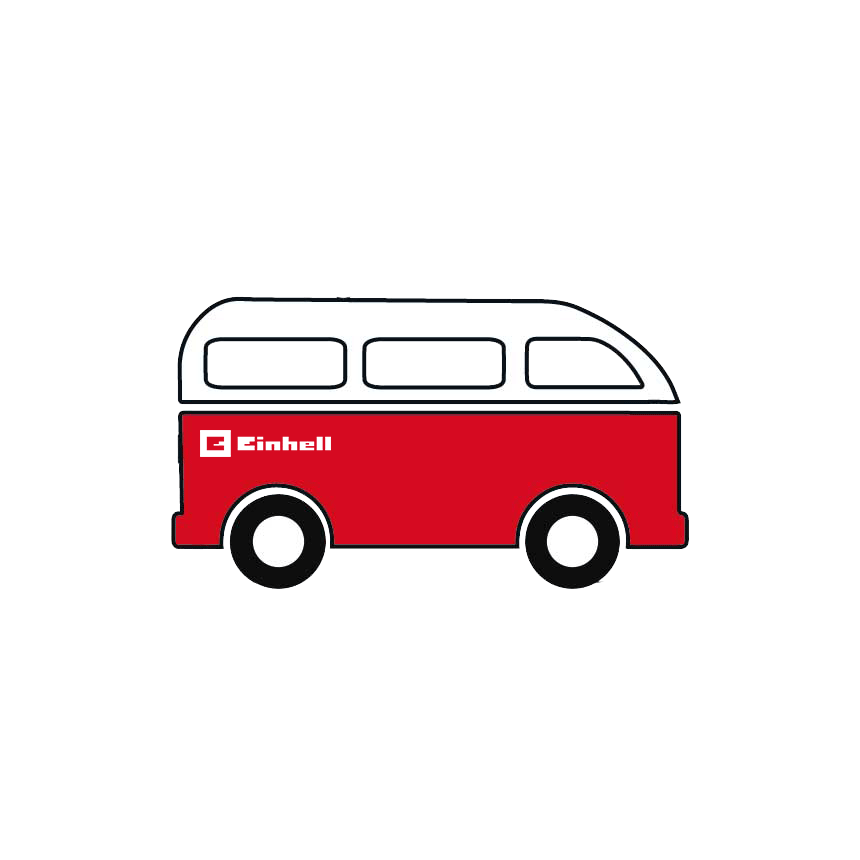
#EinhellGoesOutdoor




